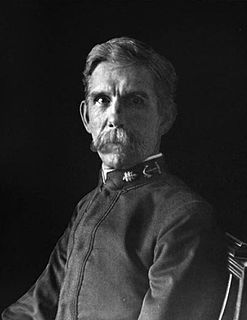
USS New Orleans was a United States Navy protected cruiser of the New Orleans class.

The first USS Dixie was a United States Navy auxiliary cruiser and later a destroyer tender. The Dixie was the first ship of the United States Navy to have this name.

The first USS Panther (AD-6), the former SS Venezuela, was an auxiliary cruiser and naval troop transport in the United States Navy.

The first USS Philip (DD–76) was a Wickes-class destroyer in the United States Navy during World War I, later transferred to the Royal Navy as HMS Lancaster. She was named for John Woodward Philip.

The first USS Pensacola was a screw steamer that served in the United States Navy during the U.S. Civil War.

The fourth USS Columbia (C-12/CA-16) was a protected cruiser in the United States Navy during the Spanish–American War and World War I. She was the lead ship of her class of two cruisers; her sister ship was Minneapolis (C-13). The class was originally designed with three funnels; however, Columbia was built with four and Minneapolis with two. This may have been to make them resemble specific passenger liners.

The first USS Walke (DD-34) was a Paulding-class destroyer in the United States Navy during World War I. She was named for Rear Admiral Henry A. Walke.

Rear Admiral Richard Wainwright, son of commander Richard Wainwright, was an officer in the United States Navy during the Spanish–American War.

USS Moody (DD-277) was a Clemson-class destroyer in the United States Navy in commission from 1919 to 1922 and from 1923 to 1930. She was named for Justice William Henry Moody.

USS Terror —the totally rebuilt version of the earlier monitor Agamenticus, which had shared the Terror's name—was an iron-hulled, twin-screw, double-turreted monitor of the Amphitrite class; on June 23, 1874 by order of President Ulysses S. Grant's Secretary of Navy George M. Robeson in response to the Virginius Incident laid down at Philadelphia contracted by William Cramp & Sons. Her construction progressed over the next three years until suspended in 1877. Work was resumed six years later, and the monitor was launched on 24 March 1883.

USS Porter was a torpedo boat, the first of her class, launched in 1896, served during the Spanish–American War, and struck in 1912. She was the first Navy ship named for Commodore David Porter, and his son, Admiral David Dixon Porter.

The first USS Ortolan(AM-45/ASR-5) was a Lapwing-class minesweeper in the United States Navy. She was later converted to a submarine rescue ship. She was named after the ortolan, a European bunting.

USS Topeka (PG-35) was a gunboat of the United States Navy.
Plutón was a Furor-class destroyer of the Spanish Navy that fought at the Battle of Santiago de Cuba during the Spanish–American War.

Furor was a Furor-class destroyer of the Spanish Navy that fought at the Battle of Santiago de Cuba during the Spanish–American War.

The seventh USS Wasp was the former yacht Columbia, purchased by the U.S. Navy and converted to an armed yacht serving from 1898 to 1919, with service in the Spanish–American War and World War I.

The first USS Leyden was a screw steamer that operated as a tug in the U.S. Navy from 1866 to 1903 and saw combat service in the Spanish–American War in 1898.

The third USS Despatch was a United States Navy steamer in commission from 1873 to 1891.

USS Earle B. Hall (APD-107), ex-DE-597, was a United States Navy high-speed transport in commission from 1945 to 1946, 1950 to 1957 and 1961 to 1965.

USS Wompatuck (YT-27) was an armed tug in commission in the United States Navy from 1898 to 1931. Early in her naval career, she saw combat in the Spanish–American War and the Philippine–American War. After she was decommissioned, she was selected for conversion into the fuel oil barge YO-64, but she was lost in the early days of World War II in the Pacific before the conversion could be completed.




















